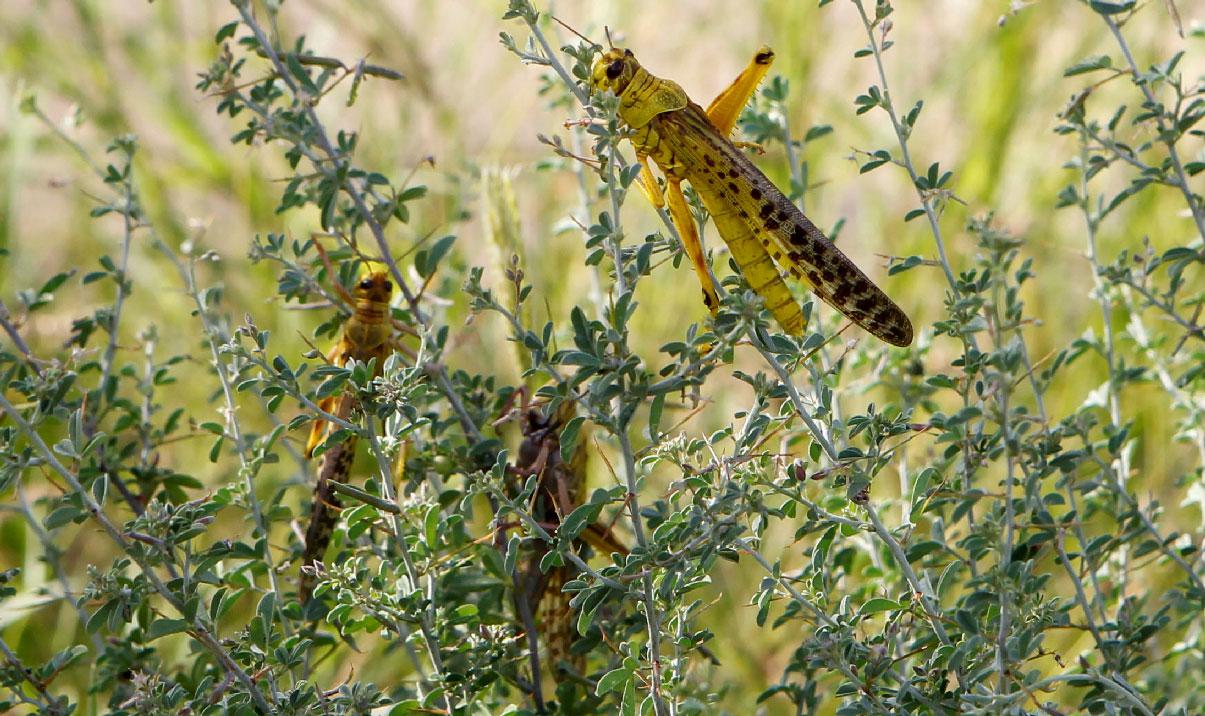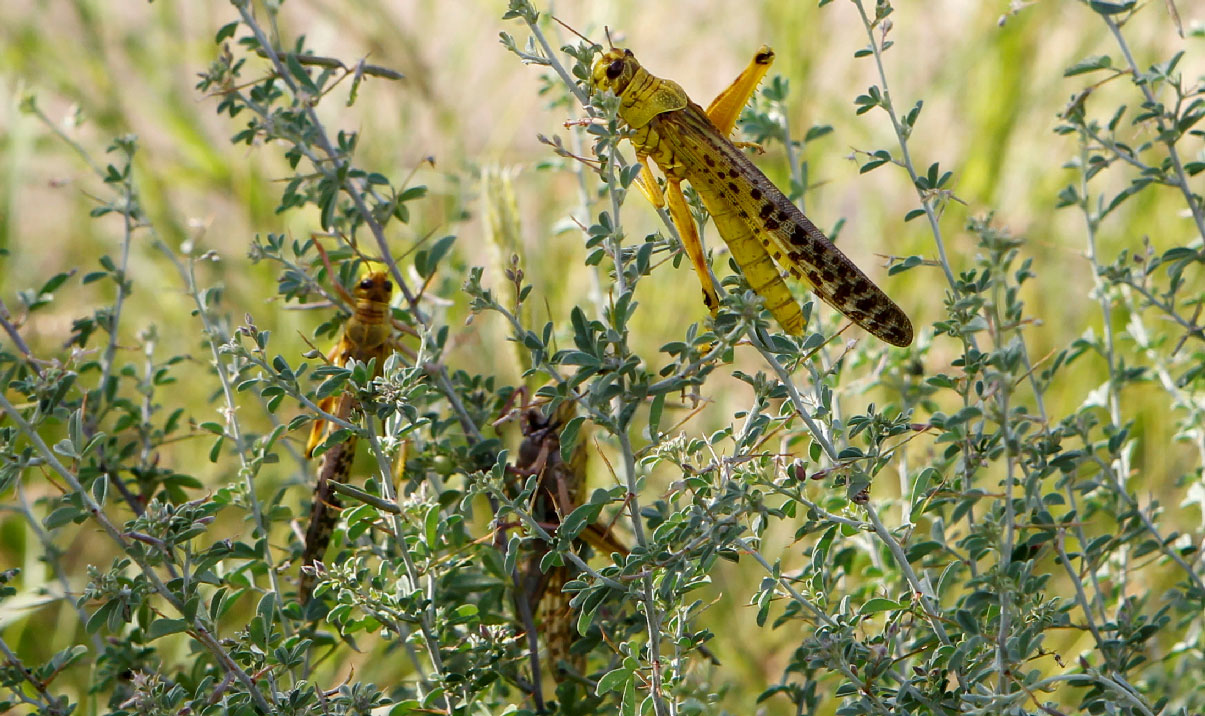East Africa locust swarms arrive in South Sudan
JUBA - Swarms of locusts which are wreaking havoc across East Africa have now arrived in South Sudan, the government said Tuesday, threatening more misery in one of the world's most vulnerable nations.
Billions of desert locusts, some in swarms the size of Moscow, have already chomped their way through Ethiopia, Somalia, Kenya, Djibouti, Eritrea, Tanzania, Sudan and Uganda. Their breeding has been spurred by one of the wettest rainy seasons in the region in four decades.
The locusts have been seen in South Sudan's Eastern Equatoria state, near the borders with Ethiopia, Kenya and Uganda. The situation in those three countries “remains extremely alarming,” the UN Food and Agriculture Organization said in its latest Locust Watch update Monday.
The soil in South Sudan's Eastern Equatoria has a sandy nature that allows the locusts to lay eggs easily, said Meshack Malo, country representative with the FAO.
At this stage “if we are not able to deal with them ... it will be a problem,” he said.
Experts have warned the main March-to-May cropping season is at risk. Eggs laid along the locusts' path are due to hatch and create a second wave of the insects in key agricultural areas. The arrival of the locusts could be catastrophic in South Sudan, where war followed by drought and floods has already left 60 percent of the population facing severe hunger.
Agriculture Minister Onyoti Adigo Nyikiwec said the locusts had crossed the eastern border with Uganda on Monday.
"The report came that these are matured. As you know locusts are like human beings, they send their reconnaissance ahead of time to make sure that whether there is food or not and if the area is good for breeding."
Malo said about 2,000 locusts had been spotted so far, and if not controlled quickly, could have a devastating impact.
"These are deep yellow which means that they will be here mostly looking at areas in which they will lay eggs."
He said the FAO was training locals and acquiring sprayers and chemicals to try and combat the locusts. It is the first locust invasion in 70 years in the country.
Other countries have employed aircraft to spray the swarms, while desperate locals have employed tactics like banging pots and pans or shooting at them.
Nyikiwec said South Sudan's government had prepared a contingency plan.
"We are training people who will be involved in spraying and also we need chemicals for spraying and also sprayers. You will also need cars to move while spraying and then later if it becomes worse, we will need aircraft."
Earlier this month Somalia declared a national emergency over the invasion. The locusts have traveled across the region in swarms the size of major cities. Experts say their only effective control is aerial spraying with pesticides, but UN and local authorities have said more aircraft and pesticides are required. A handful of planes have been active in Kenya and Ethiopia.
The UN has said $76 million is needed immediately to combat the swarm. On Tuesday, US Secretary of State Mike Pompeo during a visit to Ethiopia said the US would donate another $8 million to the effort. That follows an earlier $800,000.
The number of overall locusts could grow up to 500 times by June, when drier weather begins, experts have said. Until then, the fear is that more rains in the coming weeks will bring fresh vegetation to feed a new generation of the voracious insects.
South Sudanese ministers called for a collective regional response to the outbreak that threatens to devastate crops and pasturage. South Sudan is even less prepared than other countries in the region for a locust outbreak, and its people are arguably more vulnerable. More than 6 million people are severely food insecure, the UN humanitarian office says in its latest assessment, and some 860,000 children are malnourished.
Five years of civil war shattered South Sudan's economy, and lingering insecurity since a 2018 peace deal continues to endanger humanitarians trying to distribute aid.
The FAO says the current invasion is known as an "upsurge," the term for when an entire region is affected. However, if the invasion cannot be rolled back and spreads, it becomes known as a "plague" of locusts. There have been six major desert locust plagues in the 1900s, the last of which was in 1987-89. The last major upsurge was in 2003-05.






